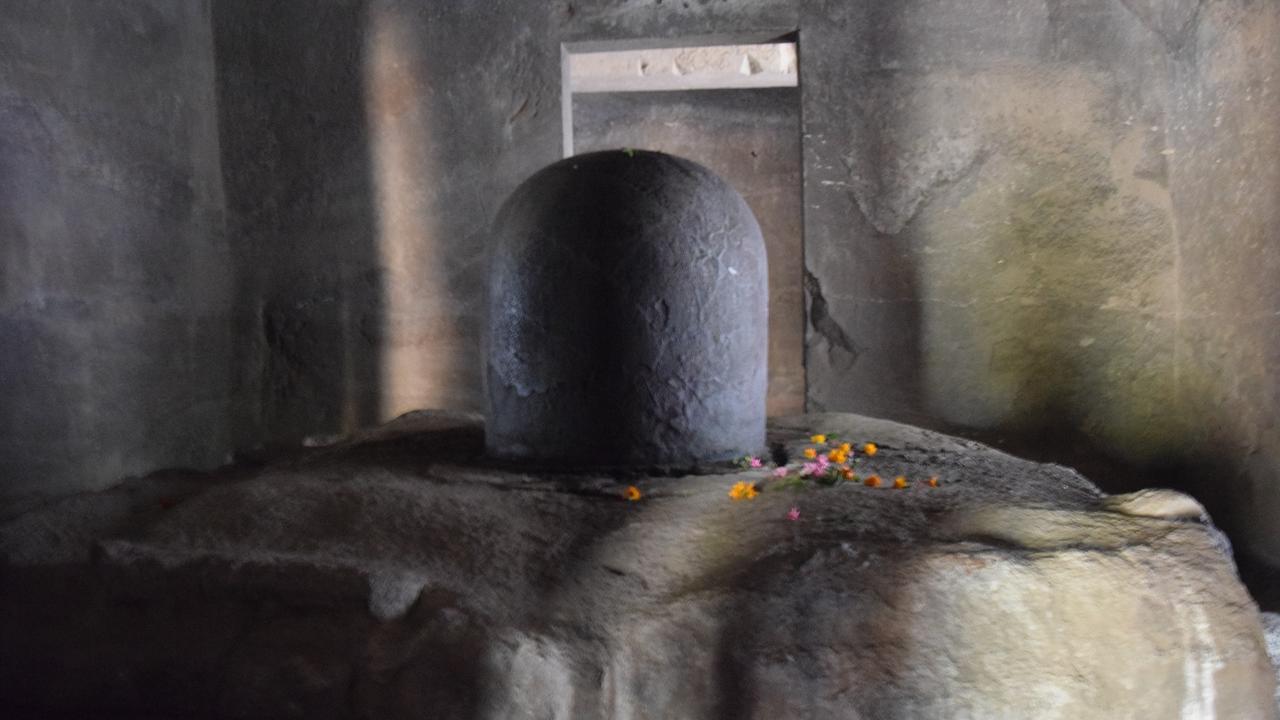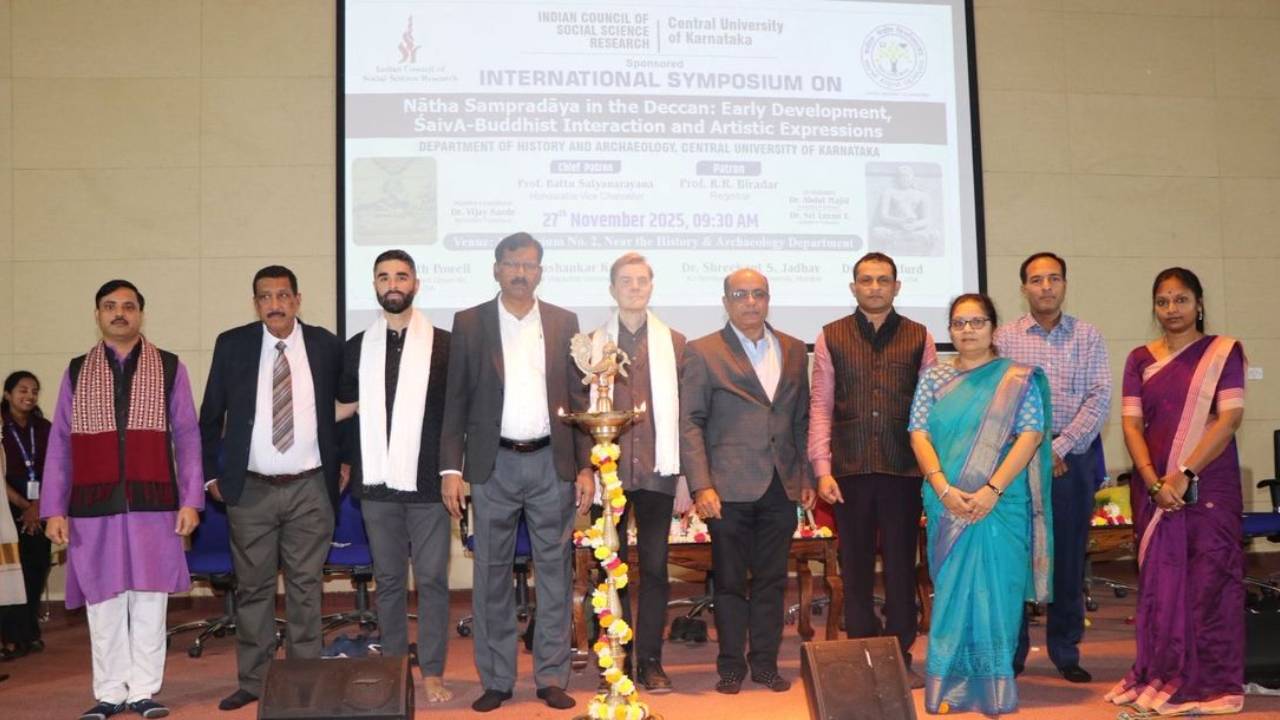Happy Mahāśivarātri 2019 from Yogic Studies!
Mar 04, 2019
Image source: Śivaliṅga at Elephanta (photo Seth Powell).
Today is Mahāśivarātri, the great night of the celebration of Śiva, which is celebrated by millions of Hindus, Śaivas, and Yogis, around the world. Śiva is often conceived as the archetypal yogi, and the great Lord of Yoga (yogeśvara). It is a day of auspiciousness, of contemplative practice and reflection, where the power (śakti) of yoga practice (sādhana) is believed to be intensified.
As a small offering on this day, I share with you a brief excerpt from my ongoing translation and study of the 15th-century Śivayogapradīpikā, the “Lamp on Śiva’s Yoga.” This unique text from south India, which forms the basis of my doctoral dissertation, uniquely combines Aṣṭāṅga and Haṭhayoga, together with ritual worship (pūjā) and devotion (bhakti)—not to a notion of God separate or outside of one's mind and body, but rather as the very essence of consciousness located within one's very Self (ātman). Here, the traditional practice and auxiliaries (aṅga) of yoga, become the very means of ritually worshipping Śiva within.
Aṣṭāṅgayoga as the Ritual Offering to Śiva Within
Śivayogapradīpikā 2.4-9 (ed. and trans. Seth Powell)
Translation
Śivayoga is to be cultivated among practitioners; Haṭha is the means for accomplishing it. Therefore, first listen to this Haṭhayoga, which is to be practiced. (ŚYP 2.4)
The eight auxiliaries of Haṭhayoga are external and internal. Thus, one should perform ritual worship (pūjā) of the deity [i.e., Śiva] through the eight auxiliaries beginning with Yama, etc. (ŚYP 2.5)
Having performed the purification of one’s self, through the power of the restraints [Yama] and observances [Niyama], and having become steadfast through various seated postures [Āsana], which one has mastered, [the yogin] should bath the divine [inner] Liṅgam with the water of breath-restraint [Prāṇāyāma]—this is the prescription of the four auxiliaries proclaimed as exterior. (ŚYP 2.6)
Now, the sandalwood paste is indeed the turning back of the senses toward Śiva [Pratyāhāra], the heaps of flowers [i.e., the cakras] are meditation [Dhyāna], the incense is that fixed concentration [Dhāraṇā], while Samādhi is the pure, great offering—this is the prescription of the four auxiliaries known as interior. (ŚYP 2.7)
Through the path of Aṣṭāṅgayoga, [remaining] always in the abode of the inner-lotus, [the yogin] should worship the supreme deity. What’s the point in worshipping the deity through external [means]? (ŚYP 2.8)
One who worships Śiva, the imperishable, within his very own Self, through the constant [practice of] the eight auxiliaries [of yoga], he indeed is a Śaiva and is a wise person; and he is the best among the knowers of yoga. (ŚYP 2.9)
Sanskrit
śivayogaḥ sādhakānāṃ sādhyas tat sādhanaṃ haṭhaḥ |
tasmād ādau prayoktavyaṃ haṭhayogam imam śṛṇu || ŚYP 2.4
aṅgāny aṣṭau haṭhasyāpi bāhyāny abhyantarāṇi ca |
yamādibhir ato ’ṣṭāṅgair devapūjāṃ samācaret || ŚYP 2.5
yamaniyamaguṇaiś ca svātmaśuddhiṃ vidhāya
svavaśavividhapīṭhair eva bhūtvā sthirātmā |
asuniyamajalena snāpayed divyaliṅgaṃ
prakaṭitacaturaṅgaṃ bāhyam etad vidhānam || ŚYP 2.6
śaṃbhor athendriyanivartanam eva gandho
dhyānaṃ prasūnanicayo dṛḍhadhāraṇā sā |
dhūpaḥ samādhir atha śuddhamahopahāram
ābhyantarākhyacaturaṅgavidhānam etat || ŚYP 2.7
aṣṭāṅgayogamārgeṇa sadāntaḥpadmasadmani |
pūjayet paramaṃ devaṃ kiṃ bāhyair devapūjanaiḥ || ŚYP 2.8
svātmany eva sadāṣṭāṅgaiḥ yo yajec chivam avyayam |
śaivaḥ sa eva vidvāṃś ca sa ca yogavidāṃ varaḥ || ŚYP 2.9




